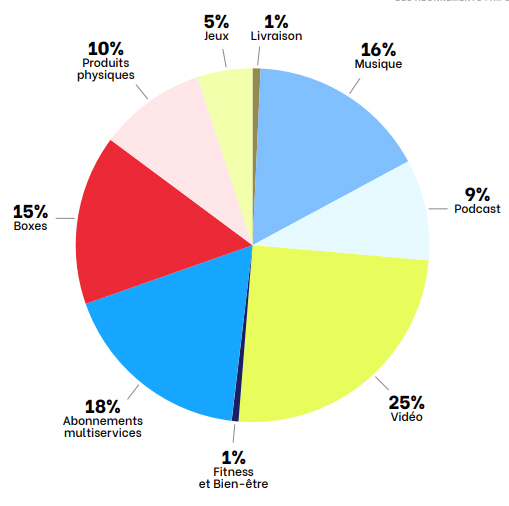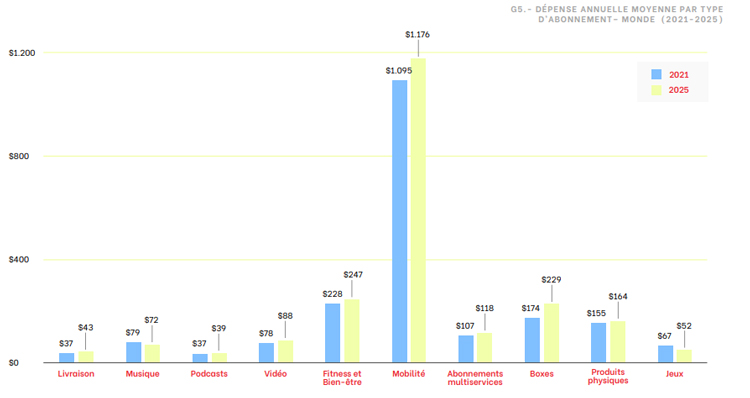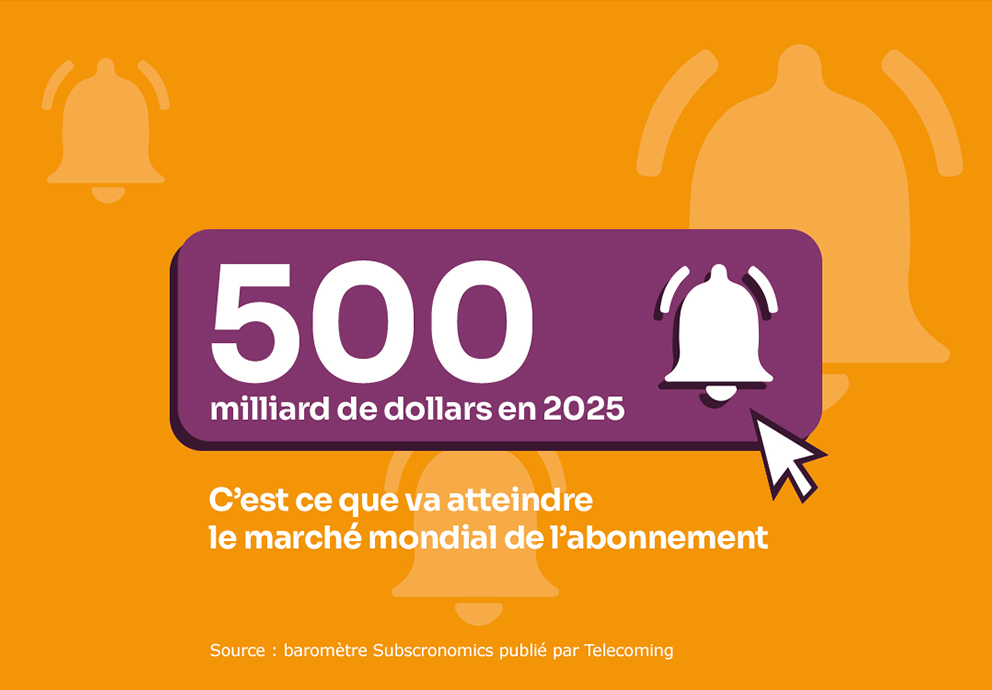Innovating to adapt is one of the challenges of retailers mentioned at the last One to One Retail E-Commerce Monaco trade show. It is a challenge that gœs hand in hand with the advent of the subscription economy. This trend, which has been present for several years, is shining at the global and national level, forcing companies to change their approach and offer.
In line with the circular economy, subscriptions are leading brands towards ever-greater flexibility, particularly in terms of payment solutions. This growth necessarily has an impact on the payment models to be implemented. Explanations.
The subscription market is at an all-time high
Exponential global growth
With an average annual growth of 25 %, the global subscription market is set to rise to 500 billion dollar in 2025.
The key figure : The global subscription market was worth 228 billion dollar in 2021.
Source : Subscronomics barometer published by Telecoming
The subscription boom in France
What about France ? The market is also doing very well, with the same prospect of doubling its turnover by 2025.
France is the third European country in terms of adoption (with nearly 50 million active subscriptions in 2021).
The study also tells us the nature of subscriptions subscribed to in France :
- a quarter of subscriptions are online boxes
- 22 % of subscriptions are on-demand videos
- 19 % are multi-service offers
What is the fastest growth expected in France ? Transport services.
The key figure : The French subscription market achieved a turnover of 6.5 billion dollar in 2021.
Source : Subscronomics barometer published by Telecoming

Source : Subscronomics barometer published by Telecoming
Subscription to services and material goods
This subscription boom concerns services and material goods.
Some examples of brands that have launched are :
- Les Petits Culottés : nappy delivery subscription for young parents
- Kiabi : the clothing subscription
- Decathlon : sports equipment subscription
- Playmobil : toy subscription
The subscription model also appeals to the industry
This trend dœs not stop at the BtoC market. Indeed, the industry is increasingly tempted by this new economic model when production conditions allow it, with companies such as La Forézienne, which rents equipment for professionals for cutting wood. What dœs the economic success of subscriptions reveal ? A change in consumer behaviour and a radical change in production methods.
Read also : In 2023, the French reveal their purchasing behaviours
Subscription without commitment: it pays off!
For several years, some consumers have agreed to move from ownership to use. This is a particularly visible phenomenon in the world of transport.

Source : Subscronomics barometer published by Telecoming.
How are car manufacturers adapting to this new situation ? By offering more and more rental options, that are increasingly flexible, to arrive today at virtually no-obligation subscription plans.
Exemple : SEAT and its non-binding offer makes it possible to return the rented vehicle from the first month.
Subscription to ecological awareness
But this transition from ownership to use gœs well beyond transport and resonates well with consumers' ecological awareness. Therefore, other forms of subscription are now flourishing, thanks to the increasing repairability of objects.
Example : Bocage and its subscription allowing customers to receive a pair of new shœs every two months.
It constitutes a real industrial and logistical challenge, which corresponds to a total change in production mode for the manufacturer, who now relies on the quality and repairability of its models, in order to be able to put them back into circulation between each customer.
« 89 % of e-merchants make the second-hand segment one of their priorities for 2023 » Sonia Mamin, Director of One to One Retail E-Commerce Monaco
The subscription economy therefore still has a bright future ahead of it, even if it is time to streamline.
Subscribe for greater flexibility and streamlining
Subscribe and cancel at any time
What are the two key success factors of subscriptions ? Flexibility and transparency.. Consumers' requirements relate to the possibility of cancelling at any time and with a click.
How is this trend manifested ? By the emergence of providers that can automatically track recurring payments to save money.
Exemple : Papernest, one of the European leaders in this sector, offers its customers the opportunity to identify on their bank statement a recurring expense that can be optimised by subscribing to a cheaper subscription (whether it is for green energy, insurance or an Internet box).
Shared subscriptions also count !
Other players offer a different form of optimisation : the possibility of sharing a subscription with co-owners.
Exemple : Spliiit and Diivii allow users to benefit from a place on a group subscription, such as Netflix's shared offer.
Payment at the heart of customer satisfaction
In a challenging economic climate, the subscription must appear to consumers as a source :
- of savings
- of benefits (such as customised offers)
- of flexibility
the payment stage is also a key element of customer satisfaction.
Towards an invisible payment stage?
More flexible payment options
One of the significant advantages of the subscription model ? The reduction of the payment phase, which disappears from the consumer's mental load from the first transaction. All they have to do is enjoy the service freely !
A number of innovations have thus emerged to limit the risks at each stage of the transaction as much as possible and promote the fluidity of the experience for the customer.
The combination of several payment methods is also considered. For example, a combination of credit card payment and recurring direct debits.
The impact on the payment models to be implemented
The debit card network has also developed a new payment option for accepting merchants. Its aim ? To fight against transaction failures following the expiry of the customer's card.
Its « Debit Card Data Update » solution thus allows automatic updating of card data for all providers using the tokenised card as part of one-click transactions or subscriptions. It is an effective way to avoid service interruptions.
In short, what are the takeaways from this trend ? Here are our conclusions and prognoses for the future :
The subscription economy will continue to develop in the years to come, even if consumers change their behaviour in the face of the crisis.
This new form of consumption promises great success in the years to come, especially if brands know how to take advantage of the personalisation and flexibility it allows.



